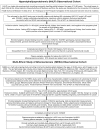Lymphocyte activation gene 3 and coronary artery disease
- PMID: 27777974
- PMCID: PMC5070966
- DOI: 10.1172/jci.insight.88628
Lymphocyte activation gene 3 and coronary artery disease
Abstract
BACKGROUND: The lipoprotein scavenger receptor BI (SCARB1) rs10846744 noncoding variant is significantly associated with atherosclerotic disease independently of traditional cardiovascular risk factors. We identified a potentially novel connection between rs10846744, the immune checkpoint inhibitor lymphocyte activation gene 3 (LAG3), and atherosclerosis. METHODS: In vitro approaches included flow cytometry, lipid raft isolation, phosphosignaling, cytokine measurements, and overexpressing and silencing LAG3 protein. Fasting plasma LAG3 protein was measured in hyperalphalipoproteinemic (HALP) and Multi-Ethnic Study of Atherosclerosis (MESA) participants. RESULTS: In comparison with rs10846744 reference (GG homozygous) cells, LAG3 protein levels by flow cytometry (P < 0.001), in lipid rafts stimulated and unstimulated (P = 0.03), and phosphosignaling downstream of B cell receptor engagement of CD79A (P = 0.04), CD19 (P = 0.04), and LYN (P = 0.001) were lower in rs10846744 risk (CC homozygous) cells. Overexpressing LAG3 protein in risk cells and silencing LAG3 in reference cells confirmed its importance in phosphosignaling. Secretion of TNF-α was higher (P = 0.04) and IL-10 was lower (P = 0.04) in risk cells. Plasma LAG3 levels were lower in HALP carriers of the CC allele (P < 0.0001) and by race (P = 0.004). In MESA, race (P = 0.0005), age (P = 0.003), lipid medications (P = 0.03), smoking history (P < 0.0001), and rs10846744 genotype (P = 0.002) were independent predictors of plasma LAG3. In multivariable regression models, plasma LAG3 was significantly associated with HDL-cholesterol (HDL-C) (P = 0.007), plasma IL-10 (P < 0.0001), and provided additional predictive value above the Framingham risk score (P = 0.04). In MESA, when stratified by high HDL-C, plasma LAG3 was associated with coronary heart disease (CHD) (odds ratio 1.45, P = 0.004). CONCLUSION: Plasma LAG3 is a potentially novel independent predictor of HDL-C levels and CHD risk. FUNDING: This work was supported by an NIH RO1 grant (HL075646), the endowed Linda and David Roth Chair for Cardiovascular Research, and the Harold S. Geneen Charitable Trust Coronary Heart Disease Research award to Annabelle Rodriguez. MESA is conducted and supported by the National Heart, Lung, and Blood Institute (NHLBI) in collaboration with MESA investigators. Support for MESA is provided by contracts HHSN268201500003I, N01-HC-95159, N01-HC-95160, N01-HC-95161, N01-HC-95162, N01-HC-95163, N01-HC-95164, N01-HC-95165, N01-HC-95166, N01-HC-95167, N01-HC-95168, N01-HC-95169, UL1-TR-001079, UL1-TR-000040, and DK063491. Cardiometabochip genotyping data for the MESA samples was supported in part by grants and contracts R01HL98077, N02-HL-64278, HL071205, UL1TR000124, DK063491, RD831697, and P50 ES015915.
Figures








Similar articles
-
A composite sleep and pulmonary phenotype predicting hypertension.EBioMedicine. 2021 Jun;68:103433. doi: 10.1016/j.ebiom.2021.103433. Epub 2021 Jun 15. EBioMedicine. 2021. PMID: 34144485 Free PMC article.
-
Association of immune cell subsets with cardiac mechanics in the Multi-Ethnic Study of Atherosclerosis.JCI Insight. 2021 Jul 8;6(13):e149193. doi: 10.1172/jci.insight.149193. JCI Insight. 2021. PMID: 34236048 Free PMC article.
-
Author Correction: Integrating data from multiple time-location measurement methods for use in exposure assessment: the Multi-Ethnic Study of Atherosclerosis and Air Pollution (MESA Air).J Expo Sci Environ Epidemiol. 2019 Sep;29(5):730. doi: 10.1038/s41370-018-0111-4. J Expo Sci Environ Epidemiol. 2019. PMID: 30804451
-
High HDL-Cholesterol Paradox: SCARB1-LAG3-HDL Axis.Curr Atheroscler Rep. 2021 Jan 5;23(1):5. doi: 10.1007/s11883-020-00902-3. Curr Atheroscler Rep. 2021. PMID: 33398433 Free PMC article. Review.
-
From bench to bedside: targeting lymphocyte activation gene 3 as a therapeutic strategy for autoimmune diseases.Inflamm Res. 2023 Jun;72(6):1215-1235. doi: 10.1007/s00011-023-01742-y. Epub 2023 Jun 14. Inflamm Res. 2023. PMID: 37314518 Review.
Cited by
-
Understanding LAG-3 Signaling.Int J Mol Sci. 2021 May 17;22(10):5282. doi: 10.3390/ijms22105282. Int J Mol Sci. 2021. PMID: 34067904 Free PMC article. Review.
-
Is a High HDL-Cholesterol Level Always Beneficial?Biomedicines. 2021 Aug 25;9(9):1083. doi: 10.3390/biomedicines9091083. Biomedicines. 2021. PMID: 34572269 Free PMC article. Review.
-
Advances in immune checkpoint-based immunotherapies for multiple sclerosis: rationale and practice.Cell Commun Signal. 2023 Nov 9;21(1):321. doi: 10.1186/s12964-023-01289-9. Cell Commun Signal. 2023. PMID: 37946301 Free PMC article. Review.
-
Immune Checkpoint Therapies and Atherosclerosis: Mechanisms and Clinical Implications: JACC State-of-the-Art Review.J Am Coll Cardiol. 2022 Feb 15;79(6):577-593. doi: 10.1016/j.jacc.2021.11.048. J Am Coll Cardiol. 2022. PMID: 35144750 Free PMC article. Review.
-
Lymphocyte Activation Gene-3 Regulates Dendritic Cell Metabolic Programing and T Cell Priming Function.J Immunol. 2021 Nov 1;207(9):2374-2384. doi: 10.4049/jimmunol.2001188. Epub 2021 Sep 29. J Immunol. 2021. PMID: 34588222 Free PMC article.
References
-
- Rigotti A, Trigatti BL, Penman M, Rayburn H, Herz J, Krieger M. A targeted mutation in the murine gene encoding the high density lipoprotein (HDL) receptor scavenger receptor class B type I reveals its key role in HDL metabolism. Proc Natl Acad Sci U S A. 1997;94(23):12610–12615. doi: 10.1073/pnas.94.23.12610. - DOI - PMC - PubMed
Publication types
MeSH terms
Substances
Grants and funding
LinkOut - more resources
Full Text Sources
Other Literature Sources
Medical
Molecular Biology Databases
Research Materials
Miscellaneous

